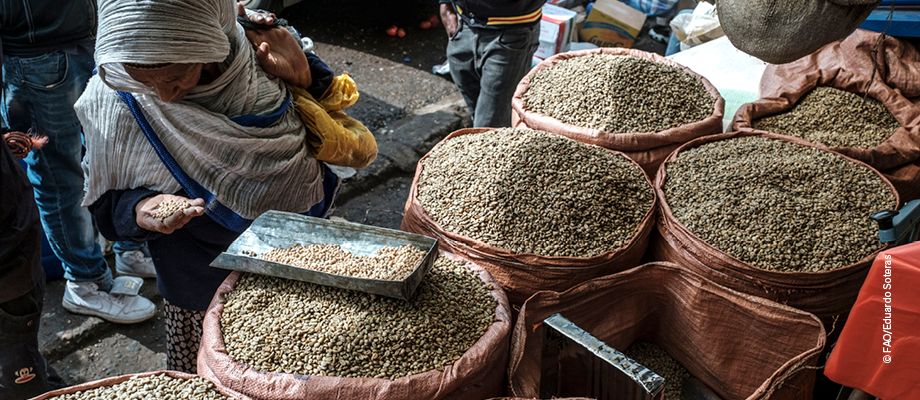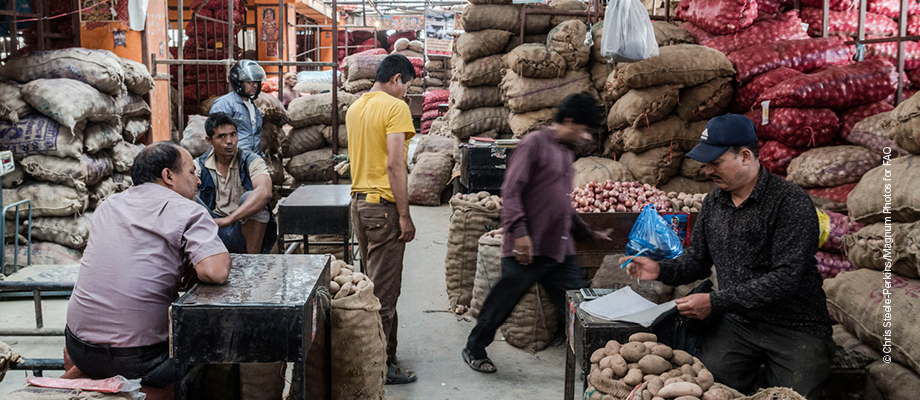How do stable, predictable market prices impact smallholder farmers’ livelihoods and investment decisions?

Smallholder farmers, who run the overwhelming majority of the world's more than 600 million farms, depend heavily on market price for their goods – sold either directly from their farm or at market.
Governments and private entities influence commodity prices through measures such as government price support, international certification, trade policy and commodity exchanges.
More stable, predictable or higher prices can benefit farmers through higher revenue and investments. But questions remain around how much of the price increases transmit to farmers.
For one, which policies, programmes and practices work best to generate greater revenues and investments? And do intermediaries – individual traders, for example, who purchase commodities from farmers for markets – help smooth market prices or reap disproportionate benefits?
Prices and farmer investment: evidence from experimental studies, a new investment brief developed by FAO Investment Centre and Innovations for Poverty Action (IPA), delves into these questions.
Using experimental and quasi-experimental methods, IPA reviewed more than 40 studies on the effectiveness of commodity pricing policies on farmer livelihoods and investment decisions.
"We assessed to what extent price changes transmit to smallholder farmers in low- and middle-income countries, and what the barriers that prevent price transmission from benefiting farmers," said Dr. Claudia Casarotto from IPA. "We also looked at how price changes influence farmers' investment decisions and their households' economic and social welfare."

Considering the barriers smallholders face
The review examined government price supports, certification and quality upgrading, contract farming, commodity exchanges, cooperative and producer organization-based interventions and trade.
For example, millions of smallholder farmers in Ghana and Côte d'Ivoire – two countries responsible for a significant share of the world's cocoa supply – rely on cocoa for their livelihood. But many live below the poverty line. The two countries decided to charge a minimum price on cocoa exports and pass that money on to farmers in the form of a living income differential – a measure that will affect nearly 2.5 million cocoa-producing smallholder farmers.
The review also looked at barriers to price transmission. The quality of transport infrastructure, intermediary market power and lack of information on prices, for example, may limit the extent to which farmers benefit from high commodity prices. This, however, varies by geography and commodity type.
The authors found that public sector price support initiatives reduce poverty. However, there are instances of distortionary effects, where wealthier farmers may benefit more from the support measures.

Quality upgrading schemes can affect farmer incomes positively, provided they do not create burdensome requirements that outweigh the benefits of participating in such schemes. Smallholder farmers may have limited access to credit or lack knowledge of new technologies that can improve quality to meet the standards of international markets.
The authors argue that while contract farming agreements do not have to be complicated to increase prices and reduce uncertainty for smallholder farmers, institutional capacity plays a key role in contract enforcement.
Policies that can enhance competition among intermediaries and better access for farmers to wholesale markets may facilitate price transmission to smallholders by reducing common barriers.
The authors also found that while information on prices, market conditions and new technologies can help smallholder farmers make better decisions, information alone may not be enough for them to receive higher prices, reduce poverty or invest more.
FAO Senior Economist Nuno Santos stressed the importance, when designing commodity price policies, of considering all the barriers smallholder farmers face.
"Larger and more medium-scale farmers may have the resources and ability to adjust to policy changes around commodity prices," he said. "But the finances, crop productivity and food security of smallholder farmers could suffer if their specific circumstances aren't taken into account."
"Weighing the relative differences in wealth, land ownership, the uptake of modern technologies, regions and household composition can enhance the impact of such policies and investment at farm level," he added.
